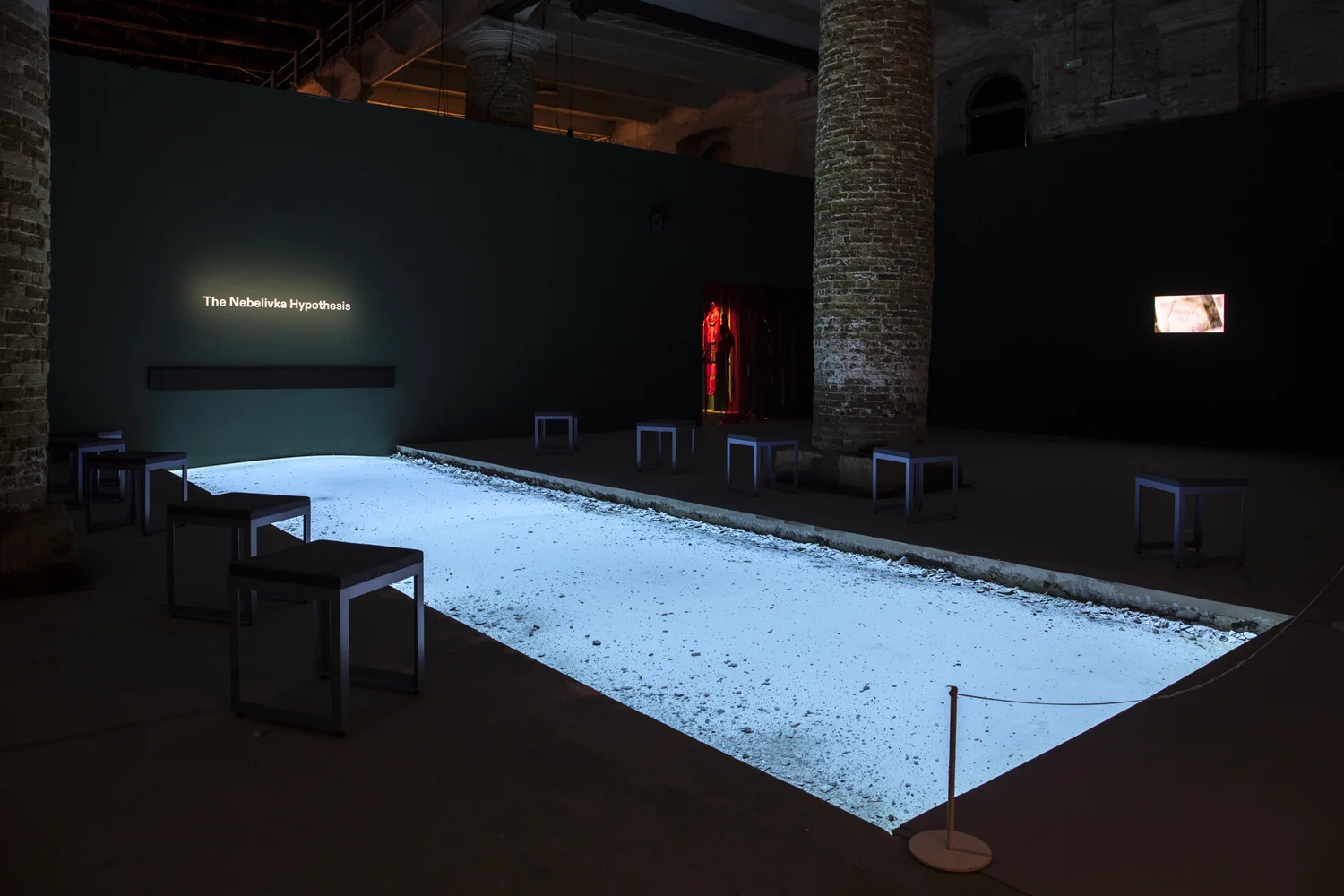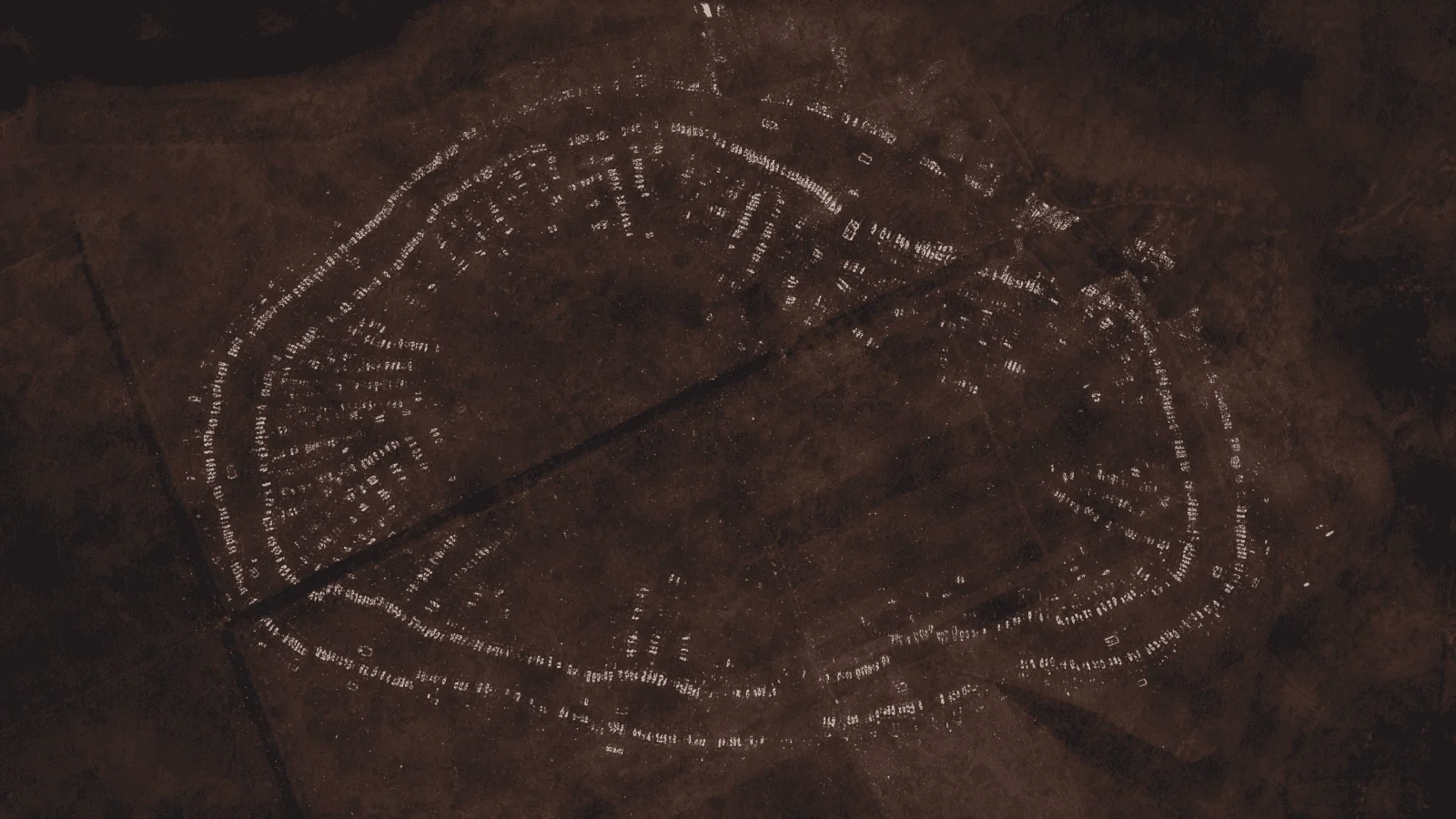Nebelivka Hypothesis
This project studies one of the earliest and largest known settlements in Europe, presenting a new perspective on the origins of cities and the nature of urban life. Developed in collaboration with Forensic Architecture and archaeologist David Wengrow for the 18th International Architecture Exhibition of the Venice Biennale, it challenges existing narratives about how complex urban centers first emerged.
Loading...
In the depths of the black soil of central Ukraine, settlements from a 6000-year-old past were discovered. They are comparable in size and antiquity to the earliest Mesopotamian cities but were created on entirely different principles. These findings can change our understanding of the historical perspective on city construction and challenge traditional notions of civilization evolution.
The Nebelivka research demonstrates that Ukrainian proto-cities were organized as concentric rings of houses around a mysterious open space. The study of landscapes in central Ukraine began in the 1970s, and it was during this time that archaeologists discovered eleven settlements from the 6000-year-old past, each consisting of residential buildings arranged in a ring, encompassing a vast open territory.
Loading...
Artifacts provide an opportunity to look at urban space differently, indicating that early cities did not require a hierarchical form and structure. There were no traces of palaces, administrations, rich burials, or any other signs of centralized control or social stratification. Material evidence indicates the need for a critical rethinking of the origins and possibilities of cities and traditional concepts of urban space, power, and ecology. The Nebelivska hypothesis asserts that egalitarian societies existed on an urban scale; and that cities can also enhance the viability of the land they inhabit.
The CST team set off to Nebelivka to gather stories from farmers living and working in the ancient city site and create three-dimensional landscape models.
Materials prepared by the Center for Spatial Technologies have been included in the multimedia installation exhibition by Forensic Architecture at the 18th Architecture Biennale in Venice. Publication with research for the installation is available at the following link: https://content.forensic-architecture.org/wp-content/uploads/2023/04/The-Nebelivka-Hypothesis_FA-Wengrow_Book.pdf